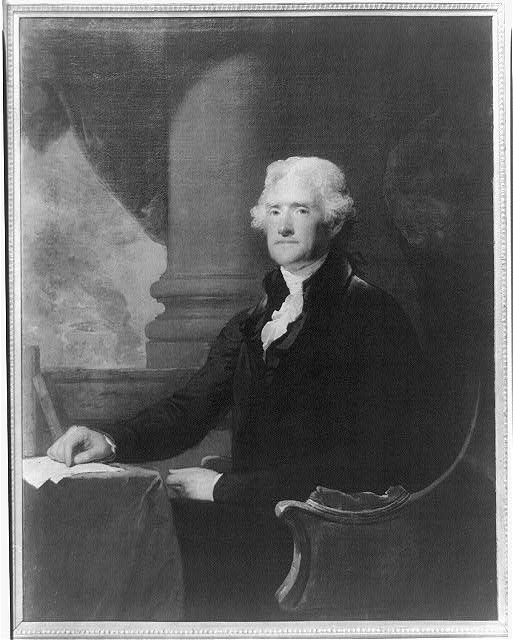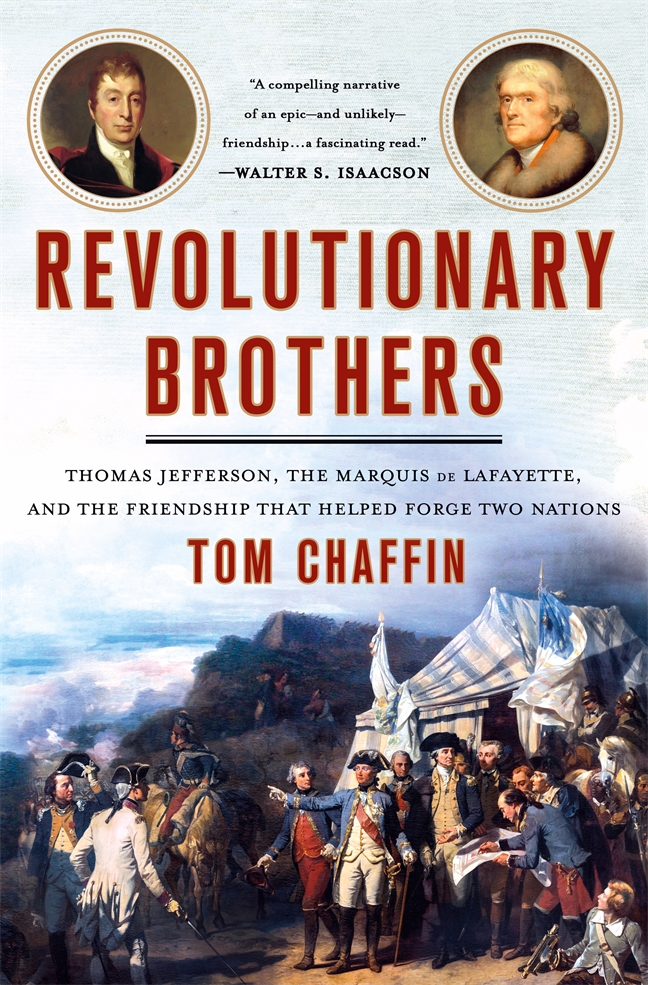Jefferson, Lafayette, and The Roads Taken and Untaken

Rambles down the past's travel-pathways can be eye-opening. I've just returned from four years of traveling, occasionally literally but mainly through archived letters and journals — in the paths of Thomas Jefferson and the Marquis de Lafayette, through the age of the American and French revolutions.
Both men, friends and collaborators for over four decades, were prodigious travelers — though of the two, Jefferson far less so. My sojourns were for my latest book — and as much as any other aspect of their respective lives, I found their individual philosophies of travel revelatory of the inner geography of each man's personality.
In his own pursuit of happiness, even the Declaration of Independence's author was not immune to coveting roads untaken, lives unlived.
Unlike Jefferson, Lafayette as a traveler, whether for military or non-military purposes, was anything but inconspicuous, possessing a taste for grandiloquent gestures and expansive rhetoric. "I recall nothing in my life that preceded my enthusiasm for glorious tales or my plans to travel the world in search of renown," he reflected in his memoirs.
Moreover, he remembered, "burning with the desire to have a uniform." To be sure, Lafayette would later come to truly venerate the republican ideals of the American patriots. But, at least initially, his recitation of those values bore a hollow resonance. Indeed, it was a desire to avenge the death of his father by the British in the Seven Years War and his appetite for fame and adventure that initially drew him, at the ripe age of nineteen, to American shores.
Like a character conjured by James Fenimore Cooper or Joseph Conrad, the marquis's preoccupation with valor and travel was never far from his lust for military adventure. Indeed, Lafayette's hunger for public acclaim suggested nothing less than the sort of preening quality that Ralph Waldo Emerson faulted in the explorer John Frémont's public image — an apparent obsession with "how we must look."
After successive failed efforts to reach the American Revolution's battle theater, Lafayette purchased and outfitted his own ship, La Victoire, for the Atlantic crossing. Eluding French authorities, Lafayette, in 1777, along with a coterie of other European volunteers for the American cause, sailed from a port in Spain to South Carolina. Traveling overland from Charleston, he soon found his way to Philadelphia where he reported for duty.
Over the next few years, the Revolution took Lafayette to battle theaters across the north — and eventually to Virginia, where his troops, in 1781, came to the rescue of the state's embattled Governor Thomas Jefferson and where Lafayette soon thereafter played a key role in the Patriot victory at Yorktown. Not that those venues satisfied the marquis's appetite for military adventure — or travel. During the war, he also proposed expeditions with himself in command, to the Caribbean, England, and elsewhere.

Jefferson was Lafayette's senior by fourteen years. And if Lafayette suggested a character from the pen of an adventure novelist — or a modern traveler consumed with idealizing each trip through carefully selected photos on social media — the Virginian more resembled a protagonist crafted by a more cerebral writer — by say, George Eliot, Henry James, perhaps even Laurence Sterne. The latter Irish-born Anglican clergyman and writer ranked among the few novelists whose works Jefferson read and enjoyed.
During Jefferson's turns as a state and federal legislator, Virginia governor, secretary of state, vice-president president, he famously longed for the familiar comforts of his beloved Monticello, his mountain-top estate in Charlottesville, Virginia. Even so, three years before Jefferson — in 1784, at the age of forty-one — accepted an offer to serve as a U.S. diplomat in Paris, he lamented to Lafayette his growing regret that, for all his study of European civilization, he had never ventured abroad. He ached, he wrote, to see more of the world, admitting that his lack of such experiences, "has given me more mortification than al[most] any occurrence of my life."
In Paris and Versailles, as Lafayette opened doors for the neophyte diplomat, the friendship between the two men blossomed. Making the most of his European stay, Jefferson, during his five-year posting, completed methodically-planned tours of England (with John Adams, then U.S. minister in London), the south of France, Holland and Prussia. During those outings, eschewing social obligations — though traveling with hired drivers and servants — Jefferson craved a degree of privacy that approached anonymity. Indeed, disdainful of Lafayette's preening, Jefferson to Madison in 1787, complained of his friend's "canine appetite for popularity and fame." Equally telling, on the eve of departing for France's Midi, Jefferson, requesting from the writer Chastellux an introduction to an abbot he hoped to consult on a scientific matter, asked that his diplomatic title go unmentioned in any contact information provided the monk: "I will only beg to be announced but as a voyageur etranger simplement, and that it be addressed à Monsr. Jefferson à Tours, poste restante [general delivery]. This deception keeps me clear of those polite obligations to which I might otherwise be engaged, and leaves me the whole of the little time I have to pursue the objects that always delight me."
Gathering information on diverse subjects, from local agriculture to architecture, Jefferson brought to his travels a discipline more befitting an observant journalist than a casually curious tourist. Aware that his time in each visited place was limited, he restricted those investigations to topics of personal interest and subjects that he believed could advance American interests. Convinced, for instance, that the United States was not destined to become in the forseeable an industrial society, while in Lyons, France, he avoided the city's then famous silk and printing industries; to an associate, he reported, "I have not visited at all the manufactures of this place: because a knowledge of them would be useless, and would extrude from the memory other things more worth retaining. Architecture, painting, sculpture, antiquities, agriculture, the condition of the labouring poor fill all my moments."
Indeed, as he toured Europe, Jefferson refined an approach to travel that he later shared with friends. "On arriving at a town, the first thing is to buy the plan of the town, and the book noting it’s curiosities... Walk round the ramparts when there are any. Go to the top of a steeple to have a view of the town and it’s environs." He likewise had views as to how to best assess the merits of competing places and vistas. "When you are doubting whether a thing is worth the trouble of going to see, recollect that you will never again be so near it, that you may repent the not having seen it, but can never repent having seen it. But there is an opposite extreme too. That is, the seeing [of] too much. A judicious selection is to be aimed at, taking care that the indolence of the moment have no influence on the decision."
Even so, Jefferson, then and throughout his life, remained a homebody in fundamental ways. In June 1787 — returned to Paris after his four-month, 1,200-mile tour of the south of France (and briefly Italy) — the Virginian, though only forty-four, confiding to a nephew, expressed the world-weariness of an older soul. "When men of sober age travel, they gather knowledge which they may apply usefully for their country, but they are subject ever after to recollections mixed with regret, their affections are weakened by being extended over more objects, and they learn new habits which cannot be gratified when they return home."
In his own pursuit of happiness, even the Declaration of Independence's author was not immune to coveting roads untaken, lives unlived.
Adapted from Revolutionary Brothers: Thomas Jefferson, the Marquis de Lafayette, and the Friendship that Helped Forge Two Nations by Tom Chaffin (St. Martin's Press, 2019).
